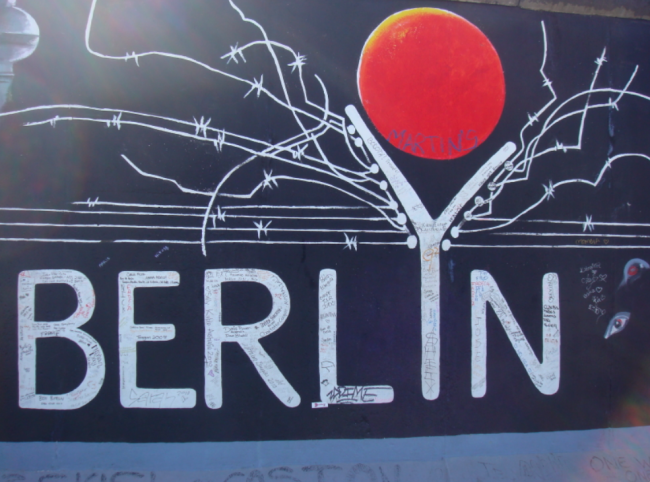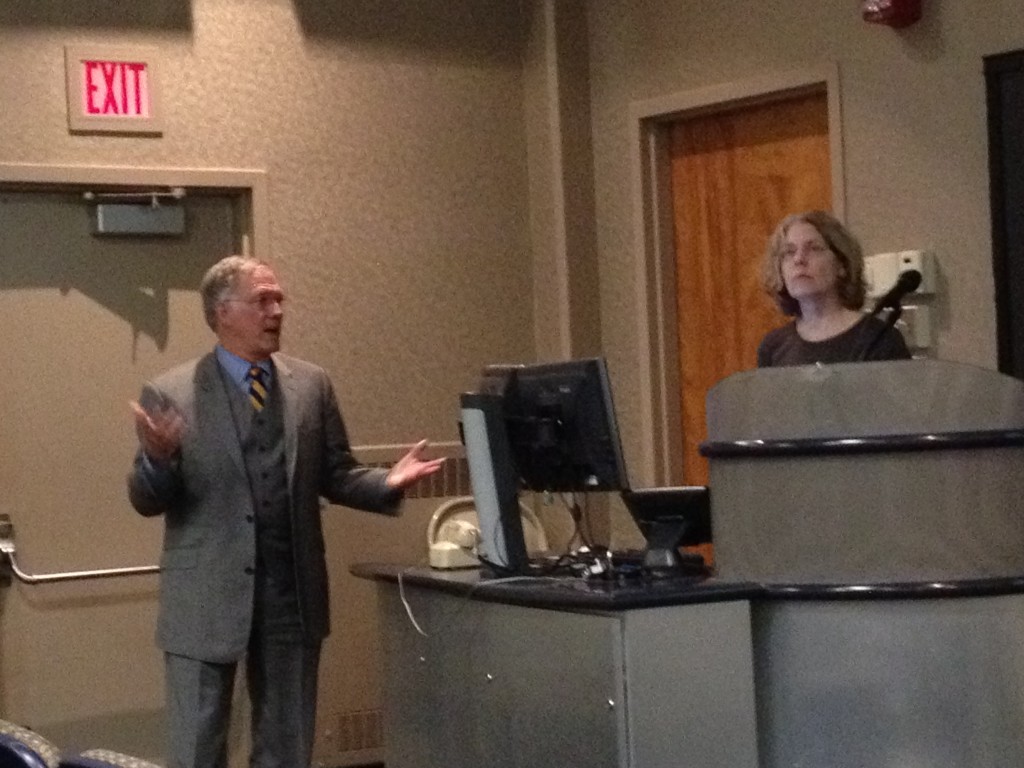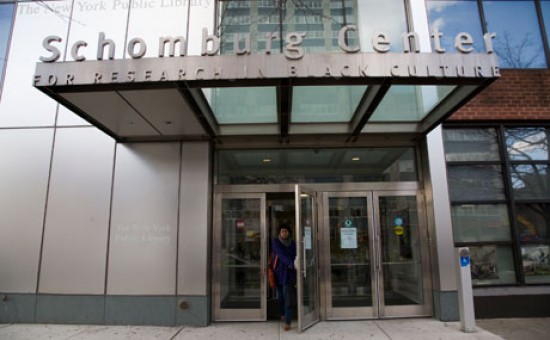Leading Egyptologist Reveals Findings
 By: Alyssa Rosenthal (Class of 2013)
By: Alyssa Rosenthal (Class of 2013)
From The Trinity Tripod, 21 February 2012
“Trinity welcomed one of the world’s foremost Egyptologists to campus on Wednesday, Feb. 15 to speak about her recent discoveries at Abydos, one of the most ancient cities in Upper Egypt. Associate Professor of Classics Martha Risser introduced Dr. Janet Richards, who was “deliriously happy to be back in New England.” The program was organized by Trinity’s Classics Department and the Hartford Society of the Archeological Institute of America. Richards is currently an Associate Professor of Egyptology in the Near Eastern Studies Department and Associate Curator for Dynastic Egypt at the Kelsey Museum at the University of Michigan. She has been the Field Director at the Abydos Middle Cemetery Project in Egypt since 1995, where her most notable achievement was the discovery of the lost tomb of Weni the Elder, one of the king’s officials, and his lengthy biography. Richards has published books about architecture, art, and society in ancient Egypt. Her most recent publication is titled Order, Legitimacy, and Wealth in Ancient States. Before diving into her presentation, titled “People, Politics, and Piety in Ancient Egypt,” Richards told her listeners she wanted to “bring [them] into the process of discovery.” She situated her findings from the sixth dynasty of ancient Egypt, around 2300 B.C., during the reign of King Pepi I. The great pyramids were built at Giza about a century earlier, during the fourth dynasty.”
Read full article HERE.
Berlin Odessey: Study Away in Berlin
By: Jake Prosnit, Class of 2012
As a history major, I could not have chosen a better city to study abroad in. Berlin is a place rich with history, old and new. I could walk along the banks of the Spree and imagine Berlin, the 13th century fishing town. I could journey 30 minutes by train to Potsdam and stand in awe of Frederick the Great’s summer palaces, a symbol of the once dominant Prussian nobility. I could stroll through the old Jewish neighborhoods and try to envision what the people and the city looked liked before fascism and allied bombs destroyed it. I could touch the Berlin wall and still sense the divide between East and West. I saw it in the architecture; I saw it in the memorials; I saw it in the language; I saw it thru my host mom (an East German) and my host dad (a West German). I am fortunate to have experienced all these ancient and modern wonders. Most importantly, I return home having more questions than when I began.
Lecture: ‘How the Irish Became Black’ with Prof. Bruce Nelson

By Michael McLean (History major, Class of 2014)
Today’s history lecture titled “How the Irish Became ‘Black’: Irish Identity in the 19th Century” provided an in-depth look at Irish identity and race relations. After giving a brief historical context on Ireland (the potato famine, mass emigration, British imperialism, etc.). Historian Bruce Nelson of Dartmouth College provided a number of images and anecdotes which displayed how the Irish were indeed labeled as a black, “negroid” race in the US and England, far inferior to other white Europeans. For instance, the Irish frequently appeared in political cartoons depicted as ape-like creatures, and were described as lazy savages with dark skin. The arguments for this kind of thinking are of course ridiculous, if not outright laughable. Nevertheless, Nelson highlighted a vital phenomenon in the history of racial identity. It is now scientifically accepted that there is no biological basis for race, but rather a social construction, and skin color has no affect on personal characteristics (i.e. intellect or diligence). Still, concepts of race still dominate much of our lives in the US and act as a tool to perpetuate inequality. In this way, the lecture was a crucial reminder that race is not as fixed as many of us would like to believe, and what constitutes “blackness” has changed dramatically over the course of history.
Borden W. Painter Jr Lecture: Prof. Kathleen Kete
By: Carolyn Taratko (History, Class of 2012)
On Tuesday, February 7th Professor Kathleen Kete gave the inaugural Borden W. Painter Jr. Lecture in the McCook auditorium. Professor Kete lectured on her current project, a history of the Alps in the French Revolution. Using Horace Benedict de Saussure’s Voyage dans les Alpes (held in our own Watkinson Library) as a guide, she interrogates the relationship between natural and civil history in the eighteenth century. Saussure, a Genevan aristocrat, was also a naturalist and a climber whose 1787 summit of Mont Blanc captured the nation’s attention. His extended forays into the Alps resulted in extensive observations on botany, geology and glaciers, but also nuanced descriptions of the mountains and the people who inhabited them. These two spheres of inquiry, the first scientific and the second picturesque, were published separately in post-Revolutionary France.
(more…)
Schomburg Thesis Research with Prof. Markle
“Yesterday, Professor Markle took me to the Schomburg Center in New York City. Located in Harlem, the Schomburg is one of America’s best repositories of African Diaspora sources. I did research for my senior thesis, and Professor did some research for his book.” Continue reading HERE:
Lecture: Recovery and Clean-Up Stalls in Wake of Japan’s Earthquake and Tsunami
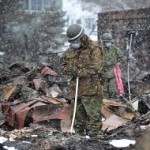 “HARTFORD, CT, November 16, 2011 – The devastation from the magnitude 8.9 earthquake that struck northeastern Japan in March of this year is almost unimaginable, with tens of thousands of people having fled, leaving the poor and the elderly to fend for themselves and gigantic piles of debris everywhere. That was the bleak picture painted by Jeffrey Bayliss, associate professor of history and an expert on Japan and Japanese culture and history, and Amelia Wei ’12, who spent a month in Japan during the summer conducting research concerning the recovery and relief efforts. Bayliss and Wei spoke at a November 15 Common Hour event sponsored by the Center for Urban and Global Studies.
“HARTFORD, CT, November 16, 2011 – The devastation from the magnitude 8.9 earthquake that struck northeastern Japan in March of this year is almost unimaginable, with tens of thousands of people having fled, leaving the poor and the elderly to fend for themselves and gigantic piles of debris everywhere. That was the bleak picture painted by Jeffrey Bayliss, associate professor of history and an expert on Japan and Japanese culture and history, and Amelia Wei ’12, who spent a month in Japan during the summer conducting research concerning the recovery and relief efforts. Bayliss and Wei spoke at a November 15 Common Hour event sponsored by the Center for Urban and Global Studies.
(more…)
Mead Lecture: Yale Professor Visits Trinity, Discusses Genocide

By: Jordan Hillier (Class of 2015)
“On Wednesday, Nov. 9 Whitney Griswold Professor of History at Yale University Ben Kiernan held a lecture at Trinity College about the history of Genocide. He stated that the legal definition of genocide is defined as “deliberate and systematic [acts committed with intent to destroy], in whole or in part, an ethnic, racial, religious, or national group.” He explained to a group of Trinity students what he had learned over the past few years through his extensive study of the term, idea, and reality of genocide. What Kiernan discussed during his lecture was a conclusion he came to, which was that while some incidents reside soundly within the legal definition of “Genocide”, this description cannot encompass all of the episodes that take place. Kiernan walked the audience through the history of genocides and the characteristics of the horrendous acts that take place. No two acts of genocide are alike, however genocidal thinking is generally racist and based on religious ideals.
(more…)
Why I Chose To Be A History Major
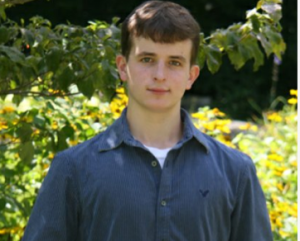 By: Michael Mclean, Class of 2014
By: Michael Mclean, Class of 2014
I still remember the first day of my freshmen year history class in High School. The question on the board was, “Why do we study history?” I could not think of an answer. Our teacher went on to list a number of cliches: history repeats itself, we are who we were, and so on. However, it was not long before he revealed the numerous connections between past events and contemporary problems. It was at this moment that I began to understand the importance of studying history. A society that does not understand its history is like a human with no memory. You cannot know where you are or where you are going of you do not know where you have been. Furthermore, history is perhaps the most holistic subject. History is not limited to names and dates, but encompasses science, math, philosophy, analytical skills, sociology, and language. I believe that history must reassert its importance and inclusive nature if we are to succeed as a society. Only by fully investing in such an undertaking can we begin to address immense problems in a troubled and changing world. For these reasons, I chose history as my major.
In Tanzania with Trinity’s African Development Coalition
By Seth Markle, Assistant Professor of History & International Studies
This past summer I had the pleasure of serving as an on-site faculty adviser for the Trinity student-led organization, the African Development Coalition (ADC) and its project in Tanzania (East Africa). In working closely with the Ministry of Health, NGOs and local leaders, ADC built a maternity ward in the under-resourced village of Lotima in Himo. “The idea of the organization is each year to pick one African country that we want to learn about,” said ADC co-founder and chairman Ibrahim Diallo. “We conduct extensive research on the country and come up with a project that we feel reflect the challenges that the country is facing. We then fund raise for the project and over the summer travel to the selected country to carry out the project.” In its first year, ADC renovated a crumbling primary school in a small village in Guinea, installed a clean drinking water pump in the school and built a house for teachers. Last year, ADC went to Sierra Leone and built three computer labs housing a total of 80 computers in the oldest university in West Africa, Fourah Bay College.The ADC project in Tanzania is designed to empower villagers whose quality of life is hampered by the lack of health-related resources.
(more…)
China Odyssey: Reflections on Shanghai Art & the Jade Buddha Temple
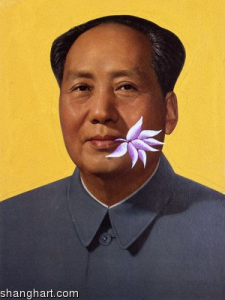 By: Bo Hershey, Class of 2012
By: Bo Hershey, Class of 2012
The Shanghai Propaganda Poster Art Centre provides viewers with a place of historical reference. When viewing the various forms of Chinese propaganda one sees that each period had its unique style. When looking even deeper one finds that every poster tells a different story. When observing the propaganda posters of the Cultural Revolution the viewer is provided with primary source of that era. These posters are not similar to contemporary art forms of the 21st century. Instead they speak to the sensibilities of that time. The collection of posters found at the Propaganda Center shows the kinds of art forms accepted under Mao. The visual language of each poster shows that political propaganda was the major art form of that era. Each poster seems to have the same kind of political tone. Yet the themes of each of the posters seem to tell a different story. A few are a glorification of Chairman Mao. Here the posters show Mao as a cult figure. When looking at these posters one can see similarities to the Spanish baroque paintings that presented the Hapsburgs as regal leaders of their domain. The poster artists of the Mao era follow a similar technique by making Mao the central figure of the poster. The anti-Western bias is another interesting feature found in many of the posters. These kinds of posters were used as a way to change the viewers perception in a negative light. Propaganda in many ways is an art form whose purpose is to influence the viewer into believing the story presented. Basically, the posters of this era are no different from those other art works. The role of the viewer is to understand the artist’s objective and make judgments that question the reason for its creation.
(more…)
